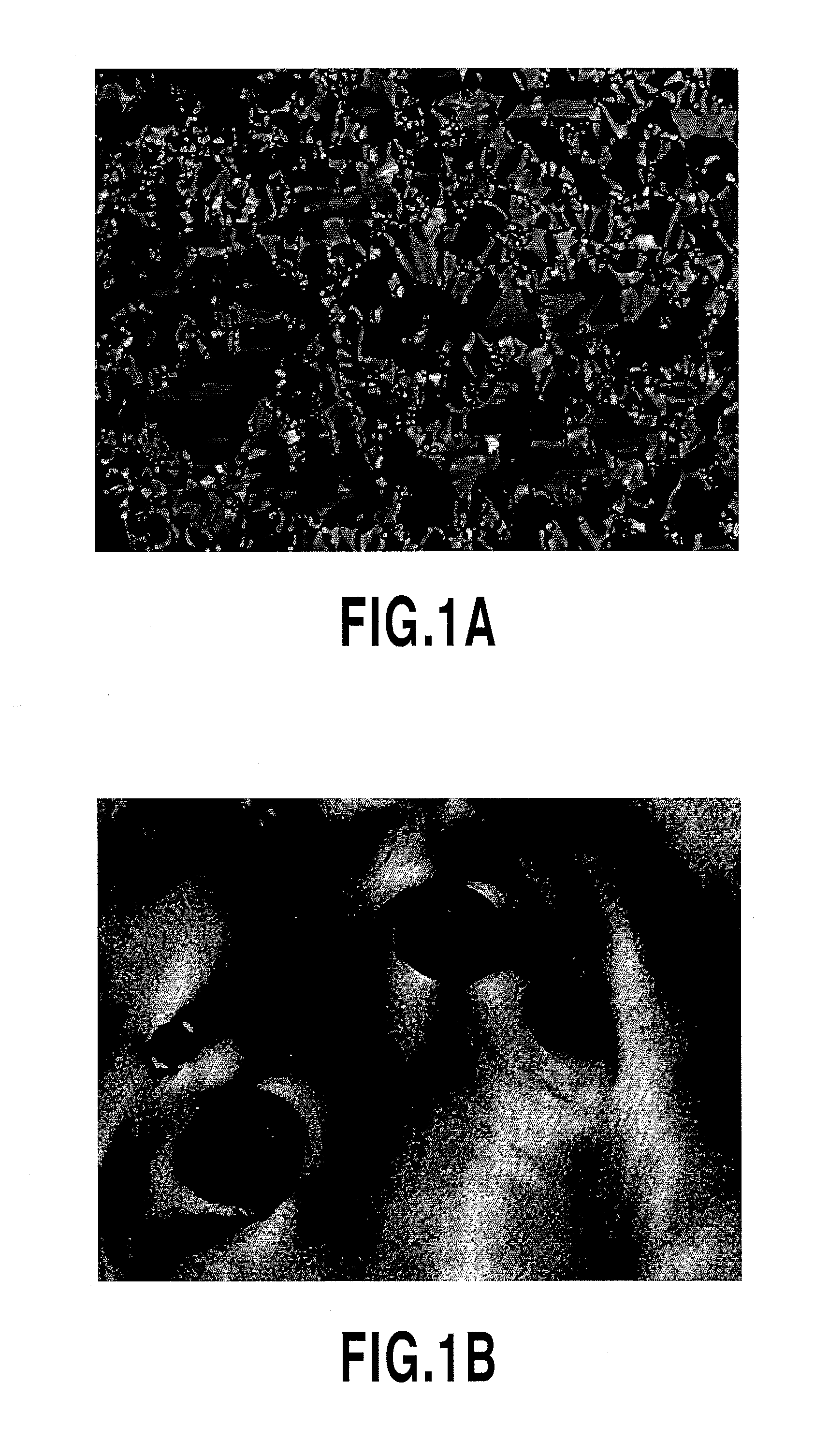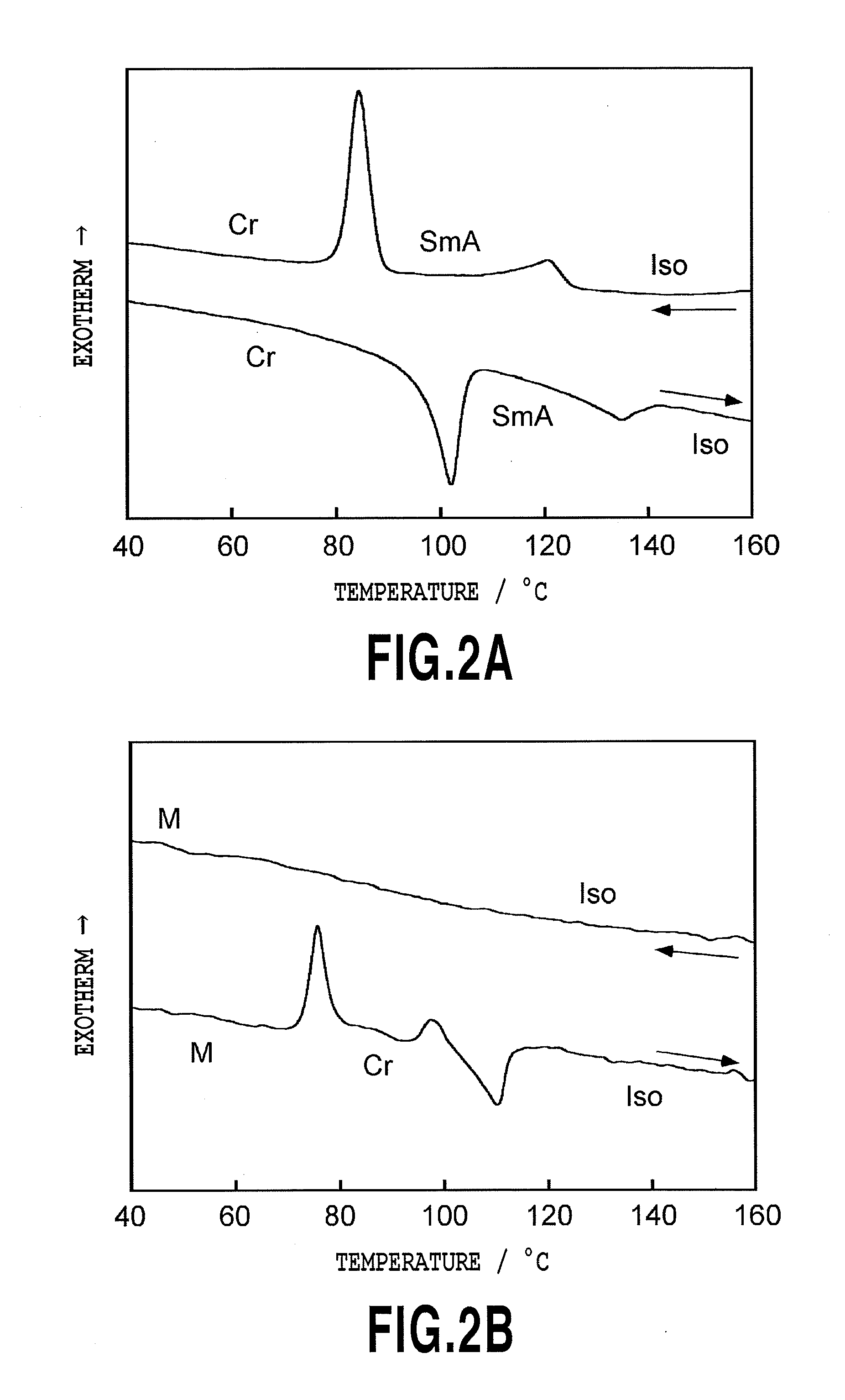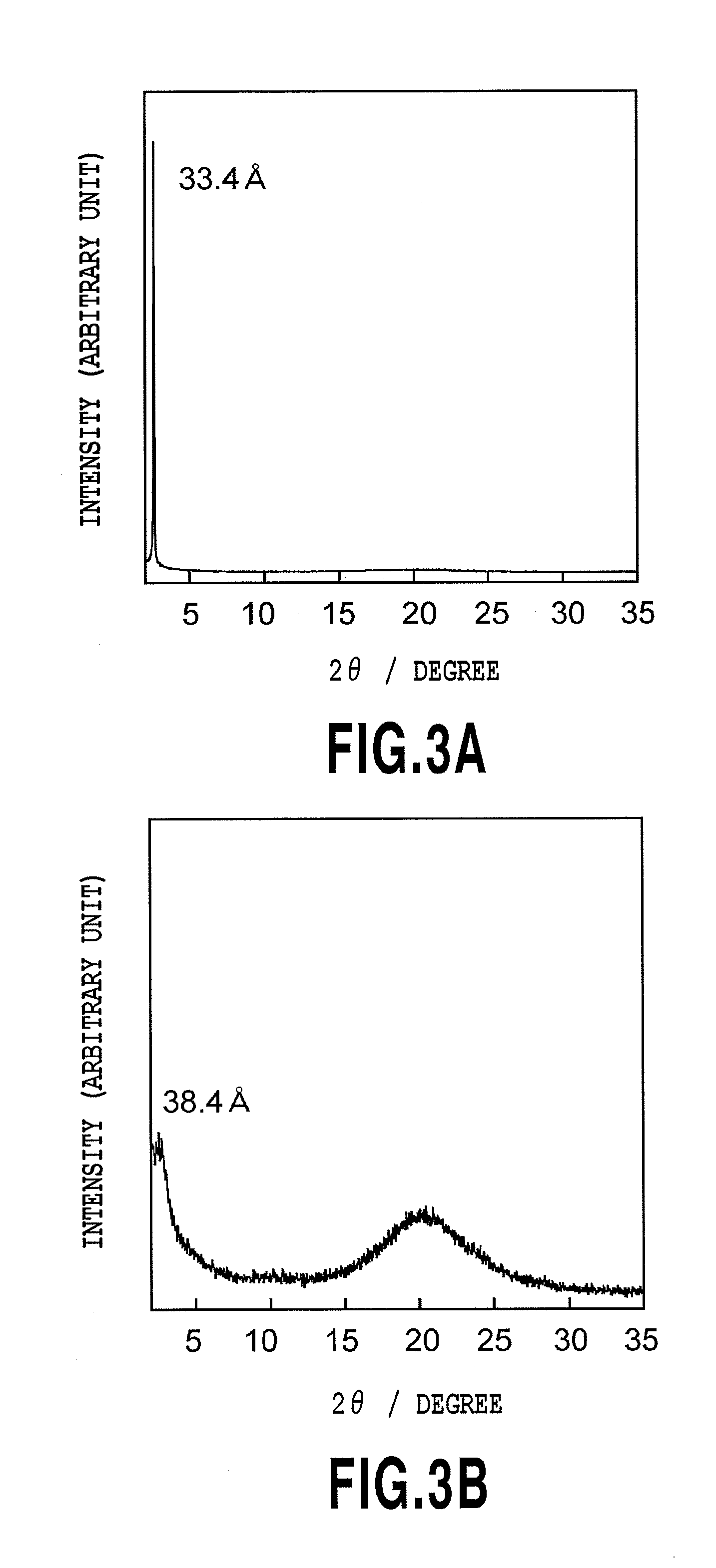Photo-responsive liquid crystalline compound and its applications
a liquid crystalline compound and photoresponsive technology, applied in the field of photoresponsive liquid crystalline compound, can solve the problems of discotic liquid crystalline phase phase phase transition caused by light, not reported, and large enough to induce the phase transition
- Summary
- Abstract
- Description
- Claims
- Application Information
AI Technical Summary
Benefits of technology
Problems solved by technology
Method used
Image
Examples
example 1
Synthesis of Liquid Crystalline Compound 1 (n=1, R1=OC12H25, R2=H and R3=H) and Liquid Crystalline Compound 2 (n=2, R1=OC12H25, R2=H and R3=H)
[0061]
(1) Synthesis of Intermediate 3
[0062]Para-nitrophenol (27.8 g, 200 mmol) was dissolved in 5 mL of water by heating to a temperature of 80° C. and stirring. To this solution was added 10 mL of concentrated sulfuric acid and 10 mL of aqueous solution of formaldehyde (35%), raising the temperature to 125° C. and continue stirring for 1 hour. After confirming disappearance of para-nitrophenol by thin layer chromatography (TLC), the reaction mixture was allowed to cool to room temperature, and solid was precipitated by pouring distilled water to the reaction mixture. The resultant solids were collected by filtration and dispersed in 5% NaOH aqueous solution. Insoluble material was removed by filtration. The resultant basic aqueous solution was acidified by hydrochloric acid to precipitate solid. The precipitated solids were collected by filtr...
example 2
[0085]FIGS. 9A-9C show constitutional examples of TFT elements produced from the liquid crystalline compounds of the present invention. The top-contact type TFT element shown in FIG. 9A has substrate 10, gate electrode 20 on the substrate 10, gate insulation film 30 covering the gate electrode 20, organic semiconductor layer 40 covering the gate insulation film 30, and source electrode 50 and drain electrode 60 formed on the organic semiconductor layer 40. Here, either of the organic semiconductor layer 40 or the gate insulation film 30 can be formed from the liquid crystalline compounds of the present invention. It become possible to control the electrical properties of the TFT elements by exposing the organic semiconductor layer 40 or the gate insulation film 30, which has been formed from the liquid crystalline compounds of the present invention, to ultraviolet or visible light.
[0086]FIG. 9B shows a constitutional example of a bottom-contact type TFT element. The constitution sho...
example 3
[0091]FIG. 10 shows constitutional example of a liquid crystalline display produced from the liquid crystalline compounds of the present invention. The liquid crystalline display shown in FIG. 10 has a pair of transparent substrates 110(a, b), liquid crystalline layer 120 and color filter 130 disposed between the pair of transparent substrates 110(a, b), optical compensators 140(a, b) and polarizers 140 (a, b) respectively disposed on the outer surface of the pair of transparent substrates 110(a, b), anti-reflection layer 180 disposed on the surface of the polarizer 140b on the light exiting side, and brightness enhancement film 160 and light guide 170 disposed on the surface of the polarizer 140a on the side of a backlight (not shown). Here, the color filter 130, the optical compensators 140(a, b), the brightness enhancement film. 160, the light guide 170 and the anti-reflection layer 180 are optional layers which may be formed if necessary. Here, either of the liquid crystalline l...
PUM
| Property | Measurement | Unit |
|---|---|---|
| temperature | aaaaa | aaaaa |
| temperature | aaaaa | aaaaa |
| temperature | aaaaa | aaaaa |
Abstract
Description
Claims
Application Information
 Login to View More
Login to View More - R&D
- Intellectual Property
- Life Sciences
- Materials
- Tech Scout
- Unparalleled Data Quality
- Higher Quality Content
- 60% Fewer Hallucinations
Browse by: Latest US Patents, China's latest patents, Technical Efficacy Thesaurus, Application Domain, Technology Topic, Popular Technical Reports.
© 2025 PatSnap. All rights reserved.Legal|Privacy policy|Modern Slavery Act Transparency Statement|Sitemap|About US| Contact US: help@patsnap.com



